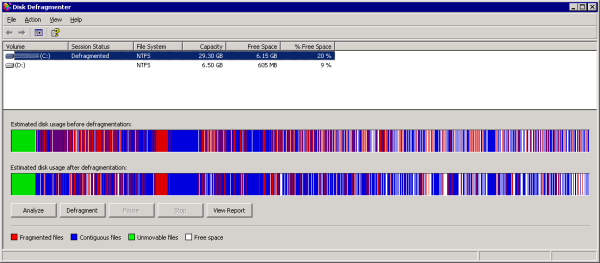Last night Owen started experiencing the symptoms of his first cold, which prompts me to talk about communications with babies. Newborn babies have only one output mode: screaming. Communicating with the world is a somewhat limited experience when joy, fear and hunger are all exhibited using the same mode of operation. From observation, crying may mean:
- Please feed me.
- I need to burp.
- I’m cold.
- I’m tired, please put me to sleep.
- I wish my nappy to be changed.
- The { toy | valuable object | fragile object } that I can’t reach – give it to me. Now.
- No, not that one, the other one.
- I’m bored. Amuse me.
- Ow, that really hurts.
- Carry me / lift me up.
- Holy crap! Don’t let that happen again! Are you listening?
Often, context will allow distiction between these options. It’s like a computer system saying “Something went wrong.” I’ve seen computer systems, particularly embedded ones, behave in a similar way. Often through design. Like, if they give you one red / green LED, then you’ve got green – all is good, red – not so good. You might get away with blinking them, and maybe even combining them to form orange, but there’s only so far you can take that (“Hmm, 600ms blink rate – that must mean that ethernet port two has a receive failure – because a 650ms blink rate would mean RAM failure”). That BIOSes doing their Power On Self Test use the PC speaker to report error codes prior to the video system coming online, I think the maximum number of beeps you’d get out of that was eleven… better pay attention and count them out. And a lot of Common Object Model errors are along the lines of “COM didn’t work because something failed”.
Interestingly, often babies don’t care too much that you understand them. They’ll keep on with the output, secure in the knowledge that you’re doing everything you can to determine what it is that they’re trying to say. And servicing one system fault may merely unmask another – a wet nappy may be followed by the need for a feed.
Screeching may also mean:
- This is great fun.
- Ha! You found me!
- Look at that guy, he’s funny.
- Hello, toy. You’re red.
The point being, the obviously inferior nature of binary output means it’s replaced as soon as possible by something else. Talking, outputing to screen, COM+, whatever. Oh, except COM+.
Cathy and I want to increase the output vocabulary of our son by using Baby Sign Language, mainly as a way of avoiding the expected trantrums: apparently, kids can sign much earlier than they can talk – like, children of deaf parents are signing from six weeks of age. Most excellently, I got given a book on the subject for Christmas, and joy-of-joys it was Australian made, so rather than American Sign Language, it was filled with AUSLAN, meaning it will have some use as a language outside on family communication (6500 Aussies – my perceived use rate is higher, because I work on St Kilda Road – home of the Victorian College for the Deaf). I’m seeing some comprehension from him, but I’m yet to see him generate any signs. Having re-read the Wikipedia article on the subject, I’m going to try to sign with Cathy when he can see us. I’ll let you know how this little experiment turns out.



 Walking to the train station from work, saw this big red ad – and I must admit, I think my vision is going – I think it’s degenerated to the point where it’s as good as most people’s. And perhaps I’m slightly dyslexic, but I read the ad as “Australia’s first web chicken”. Perhaps I spent too much time in NZ as a child. In fact, in looking critically at it, and recalling a
Walking to the train station from work, saw this big red ad – and I must admit, I think my vision is going – I think it’s degenerated to the point where it’s as good as most people’s. And perhaps I’m slightly dyslexic, but I read the ad as “Australia’s first web chicken”. Perhaps I spent too much time in NZ as a child. In fact, in looking critically at it, and recalling a 